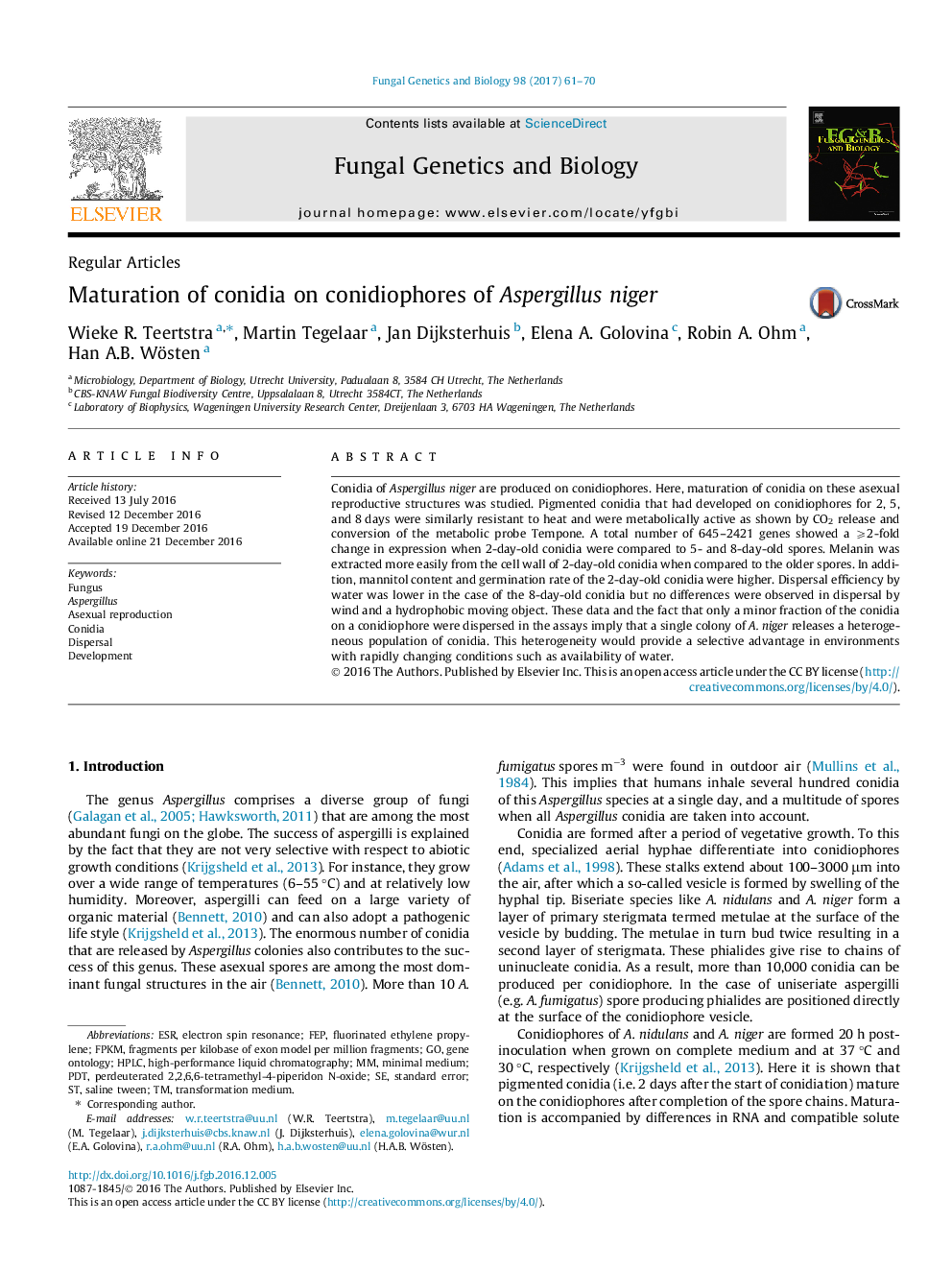| Article ID | Journal | Published Year | Pages | File Type |
|---|---|---|---|---|
| 5532788 | Fungal Genetics and Biology | 2017 | 10 Pages |
â¢Conidia of A. niger mature on conidiophores.â¢Maturation is accompanied by changes in RNA and compatible solute composition.â¢Maturation is accompanied by changes in melanin extractability.â¢Maturation results in reduced water dispersal efficiency and germination rate.â¢Conidia released by an A. niger colony differ with respect to maturation state.
Conidia of Aspergillus niger are produced on conidiophores. Here, maturation of conidia on these asexual reproductive structures was studied. Pigmented conidia that had developed on conidiophores for 2, 5, and 8 days were similarly resistant to heat and were metabolically active as shown by CO2 release and conversion of the metabolic probe Tempone. A total number of 645-2421 genes showed a ⩾2-fold change in expression when 2-day-old conidia were compared to 5- and 8-day-old spores. Melanin was extracted more easily from the cell wall of 2-day-old conidia when compared to the older spores. In addition, mannitol content and germination rate of the 2-day-old conidia were higher. Dispersal efficiency by water was lower in the case of the 8-day-old conidia but no differences were observed in dispersal by wind and a hydrophobic moving object. These data and the fact that only a minor fraction of the conidia on a conidiophore were dispersed in the assays imply that a single colony of A. niger releases a heterogeneous population of conidia. This heterogeneity would provide a selective advantage in environments with rapidly changing conditions such as availability of water.
